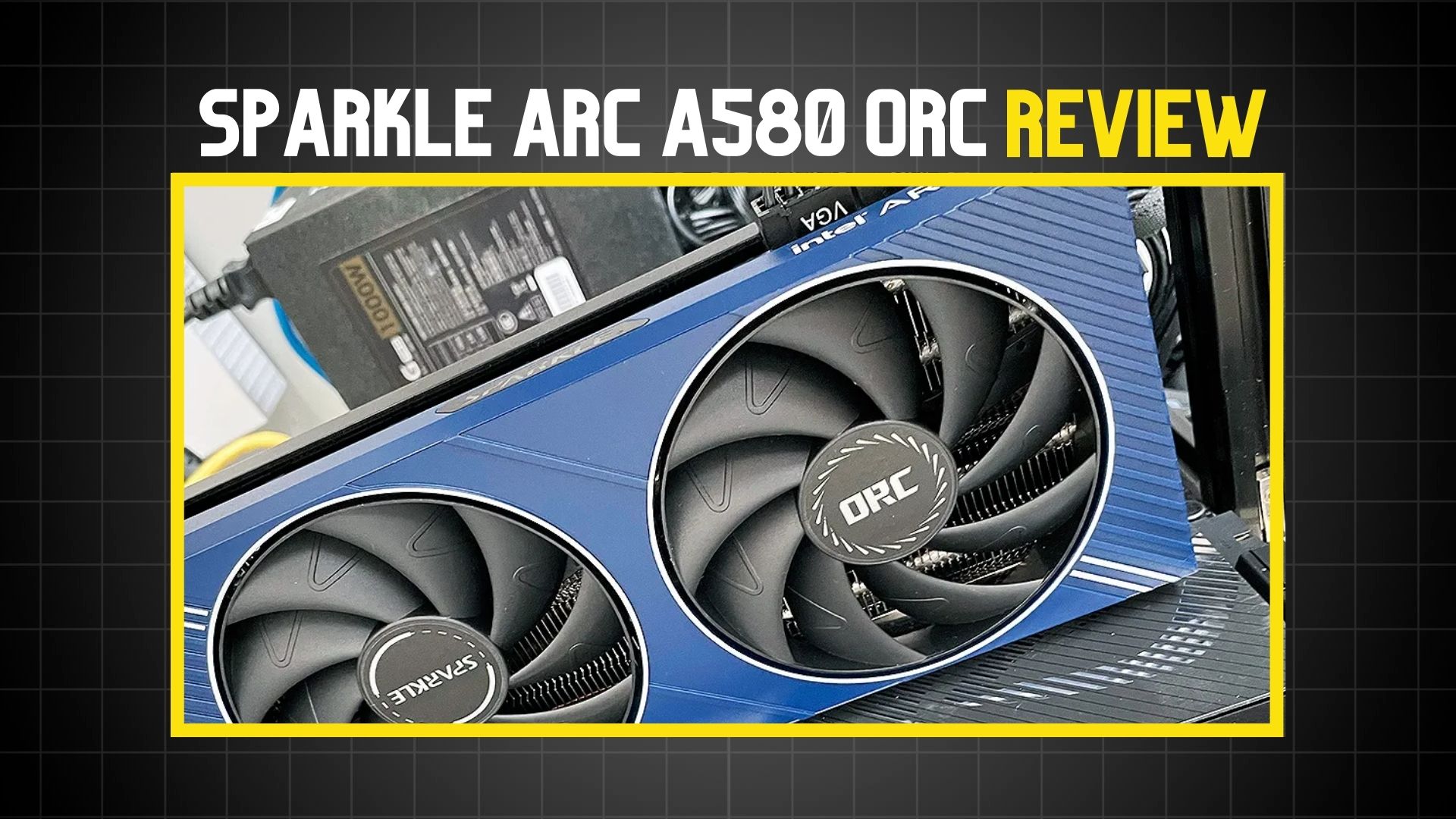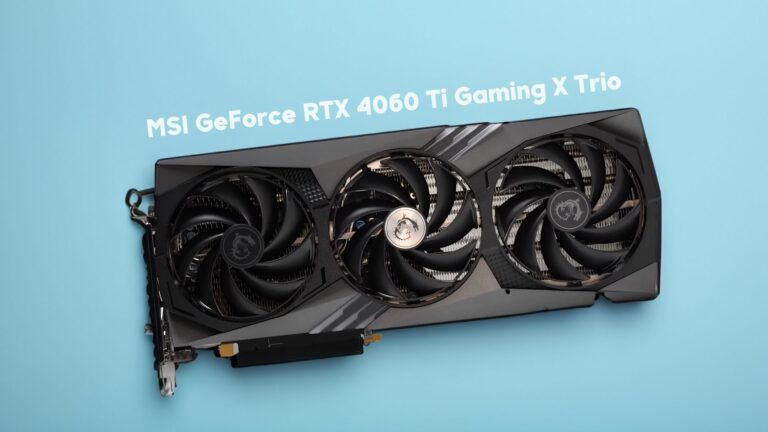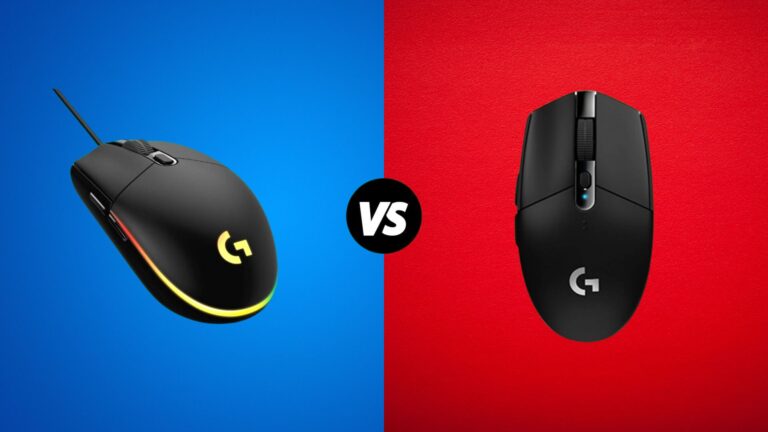Intel’s latest venture into the competitive GPU market is the Arc A580 chipset, an evolution of the ACM-G10 architecture that has already made its mark in various laptop models and top-tier desktop offerings like the Arc A770.
The Arc A580 aims to challenge the entry-level products of AMD and NVIDIA. Priced around $180, it’s tailored to deliver smooth 1080p gaming performance across a spectrum of titles, including the latest AAA games. This capability is bolstered by Intel’s advanced resolution upscaling technologies, such as Intel XeSS, similar in function to AMD’s FSR.
Intel’s strategy isn’t about hitting the highest benchmarks; rather, it’s about capturing a niche in the market currently dominated by older-generation cards. This chipset brings fresh, state-of-the-art features to the table, particularly in video processing and modern API support, at price points that traditionally only offer access to outdated models.
Popular GPUs in this segment include the GTX 1070 Ti, GTX 1080, RTX 2060, and AMD’s Radeon RX 6600 and 5700 XT, frequently seen on platforms like Steam. The Arc A580 is a significant step up from its predecessor, the Arc A380, offering a robust hardware upgrade.

Technically speaking, the Arc A580 is a powerhouse. It boasts 3072 shader engines, triple that of the Arc A380, and includes 24 Xe Cores, two Raytracing units, and a whopping 384 Xe Vector Engines paired with an equal number of AI units (akin to NVIDIA’s Tensor Cores). This GPU is essentially a 6 ‘Render Slice’ unit, a substantial leap from the Arc A380’s 2, offering a remarkable performance boost. These ‘Render Slices’ are comparable to AMD Radeon’s compute units or NVIDIA’s SM (Streaming Multiprocessor).
The chipset features 1024 shading units, optimized for DX12 Ultimate and Vulkan, and is equipped with 8 X-Core units for hardware RayTracing. However, it might struggle with RayTracing effects in high-end AAA titles due to its processing limits.

Manufactured using TSMC’s N6 process within the Intel Xe HPG microarchitecture, the GPU supports PCI Express 4.0 with a 16x link and “Resizable BAR,” fully utilizing the PCI Express 4.0 16x interface at this price level.
The memory configuration includes 8GB of GDDR6 RAM, clocked at 16Gbps on a 256-bit bus, offering up to 512GBps bandwidth – one of the highest in its class.

In terms of connectivity, the Arc A580 is modern and versatile, featuring Displayport 2.0 and HDMI 2.1. This enables support for 8K@60Hz and 4K@120Hz with HDR, a notable advancement in a market segment often limited to HDMI 2.0 or Displayport 1.4.
Specifications
| Microarchitecture | Xe HPG |
| Lithograph | TSMC N6 |
| Xe-cores | 24 |
| Render Slices | 6 |
| Raytracing Units | 24 |
| Intel® Xe Matrix Extensions (Intel® XMX) Engines | 384 |
| Xe Vector Engines | 384 |
| GPU Speed | 2400 MHz |
| TDP | 175 W |
| Memory Size | 8 GB |
| Memory Type | GDDR6 |
| Memory Interface | 256-Bit |
| Memory bandwidth | 512 GB/s |
| Memory Speed | 16 Gbps |
| Supported Technologies | Raytracing, VRS, DX12 Ultimate, Vulkan, Adaptive Sync |
| Supported Displays | 4 |
| Video Outputs | eDP 1.4, DP 2.0 up to UHBR 10, HDMI 2.1 |
| Maximum HDMI resolution | 4096 x 2160@60Hz |
| Maximum Displayport resolution | 7680 x 4320@60Hz |
| H.264 Hardware Encode/Decode | Yes |
| H.265 (HEVC) Hardware Encode/Decode | Yes |
| AV1 Encode/Decode | Yes |
| VP9 Bitstream & Decoding | Yes |
Features of Intel’s Xe HPG microarchitecture
Intel’s Xe HPG architecture is a game-changer in the world of modern gaming, designed to excel with the latest APIs like DX12 Ultimate and Vulkan. However, the gaming landscape is diverse, with many gamers still engaged in titles that rely on older APIs. This has prompted Intel to refine their architecture to ensure compatibility with these earlier systems, a challenge also tackled by competitors like NVIDIA and AMD.
The innovation doesn’t stop there. Intel, along with other manufacturers, has harnessed the power of AI. Intel Arc graphics cards, for instance, utilize their 384 Intel XMX AI units to adeptly process parts of DX9 and DX11, showcasing a seamless blend of old and new technologies.
Intel’s prowess extends to supporting the latest standards. Their GPUs are fully compatible with the newest versions of Vulkan, OpenCL, and DirectX 12 Ultimate – the same platform used by NVIDIA’s RTX 20, 30, and 40 series, as well as AMD’s Radeon RX 6000 and 7000 series.
What sets Intel apart in this fiercely competitive field is their unparalleled video processing capabilities. Intel’s new chipset offers comprehensive support for the latest ultra-high-definition video standards such as H.264, H.265 HEVC, AV1, and VP9, all with hardware-assisted encoding and decoding.
Intel Arc also brings to the table Intel Deep Link technology. This innovative feature synergizes Intel Core processors and Intel Arc GPUs, not only enhancing processing power but also optimizing energy use. Whether it’s offloading streaming tasks to the CPU while the GPU handles gaming or boosting video encoding efficiency, Intel Deep Link elevates the computing experience.

Intel doesn’t stop at hardware. Their graphics cards boast Intel Xe Super Sampling (XeSS) technology, comparable to AMD FSR or NVIDIA DLSS, utilizing Intel XMX IA units to deliver high-resolution images with minimal processing. Additionally, Intel Arc is backed by robust drivers and an intuitive interface in the form of Intel Arc Control, melding performance tuning and real-time streaming functionalities in one seamless package.
This blend of cutting-edge technology and user-centric design makes Intel’s offerings not just a testament to their commitment to innovation but also a beacon for the future of gaming and graphics technology.
Design & Build
Meet the Sparkle Intel Arc A580, a standout in both design and performance within Intel’s new graphics card lineup. While this range doesn’t feature reference designs, all market offerings, including this model, have Intel’s stamp of approval, adhering to the expected specifications right from their debut.
The Sparkle Intel Arc A580 sports a straightforward yet effective design. It’s equipped with two 92mm fans, which are more than capable of handling the card’s 185W TDP. These fans also boast a zero RPM mode at idle, ensuring a silent operation when the load is light. The card’s design is both classic and functional, without unnecessary frills. Additionally, its compact size, measuring under 21cm in length and occupying just two slots, makes it an ideal choice for space-constrained setups.
In terms of power, the Sparkle Intel Arc A580 8GB is well-endowed with 8GB of RAM. It draws power through two 8-pin PEG connectors, each providing up to 150W, totaling a maximum of 300W. Moreover, the card can harness an additional 150W from its 16x PCI Express 4.0 interface, ensuring ample power delivery for demanding tasks.

Cooling is handled by a heat dissipation block comprising two aluminum sections linked by heatpipes in direct contact with the GPU. While Sparkle doesn’t venture into uncharted territory with this cooling solution, it’s worth noting that their approach is highly effective, especially for a card with sub-200W power consumption. The cooling system maintains operational temperatures within safe limits, and we’ll delve deeper into its cooling efficacy, acoustic performance, and power consumption in the upcoming sections.
Connectivity on the Sparkle Intel Arc A580 is in line with Intel’s specifications and user expectations. The card features three DisplayPort 2.0 ports and an HDMI 2.1 port on its front end, supporting up to four monitors. It can handle demanding display setups, including 8K@60Hz or 4k@120Hz high-frequency resolutions per connector.

The card’s dimensions are impressively compact at 110mm wide, 210mm long, and two slots in height, making it a suitable candidate for low-volume computing solutions. Its specifications align with the chipset’s standards, boasting a max GPU frequency of 2400MHz, a base frequency of 1700MHz, and 8GB of GDDR6 memory operating at 16Gbps on a 256-bit data bus. This combination promises robust performance for a variety of applications.
Noise, Consumption and Overclocking
Our comprehensive testing of the Sparkle Intel Arc A580 revealed a performance profile reminiscent of the A380, particularly in achievable frequencies. However, it’s important to note that these two models vary significantly in their real-world performance capabilities.

A key observation from our tests is the Arc A580’s ability to consistently maintain its maximum frequency of 2400MHz. This performance is achieved with a relatively modest noise level of about 40dBA and a total power consumption hovering around 160W. Impressively, the card’s temperature remains stable at around 70 degrees Celsius, with the fans operating at an average of 1900rpm in the factory preset mode.
Exploring the card’s overclocking potential through the Intel Arc Control panel, we had the opportunity to experiment with various adjustments. The panel offers options to enhance the power range, increase the temperature threshold, and fine-tune frequencies and voltages. Personally, I prefer not to tinker with voltages, so our focus was on the other available options.

In our hands-on tests, we found that this model can reliably handle a frequency boost up to 2550MHz – coincidentally, the same peak we achieved with the Arc A380 a few months back. Pushing beyond this threshold led to system instabilities and screen freezes in our experience. Interestingly, this frequency increase does not significantly impact the card’s thermal performance. The temperature only rose marginally from 70 to 72 degrees Celsius, which didn’t necessitate a substantial change in fan speed or noise level. As for performance gains, this overclocking resulted in an approximate 5% improvement, demonstrating that the Sparkle Intel Arc A580 can offer a bit more under the hood for those willing to explore its overclocking capabilities.

Performance
Test Bench:
| Motherboard: ASUS ROG CROSSHAIR X670E HERO |
| CPU: AMD Ryzen 9 7950X |
| RAM: 32GB DDR5 6000Mhz |
| Power Supply: FSP Hydro G Pro 1000W ATX |
| SSD: Kioxia Exceria Pro 2TB |
Games Benchmarks:
We have conducted tests on 9 games, all set to ultra settings and running at a 1080p and 1440p resolutions. The table displays the average frames per second achieved for each game.
| Games Tested | 1080p | 1440p |
| Ashes of the Singularity (DX12) | 106 FPS | 85 FPS |
| DOOM 2016 (Vulkan) | 138 FPS | 125 FPS |
| Halo Wars 2 (DX12) | 128 FPS | 109 FPS |
| Total War: Warhammer (DX12) | 72 FPS | 55 FPS |
| Battlefield 1 (DX12) | 69 FPS | 85 FPS |
| Star Wars Battlefront II (DX12) | 62 FPS | 95 FPS |
| Battlefield V (DX12) | 106 FPS | 71 FPS |
| DOOM Eternal | 122 FPS | 61 FPS |
| Microsoft Flight Simulator | 25 FPS | 21 FPS |
Other Benchmarks:
| Name | Score |
| 3DMark Firestrike | 14,360 |
| 3DMark Firestrike Ultra | 3,854 |
| VRMark Orange Room | 10,460 |
| VRMark Cyan Room | 5,551 |
Sparkle Arc A580 Orc $180
Overall
-
Design
-
Performance
-
Features
-
Value
Conclusion
Meet the Intel Arc A580, a noteworthy upgrade from its predecessor, the Intel Arc A380, which subtly made its way into pre-assembled PCs but failed to make a significant impact. Priced just around $180, the A580 isn’t just a step up in terms of performance; it marks a substantial leap in technology for its price range.
Where its competitors often feature last-generation tech, the Arc A580 brings to the table cutting-edge features. It supports hardware AV1 encoding and embraces the latest in API technology, including DX12 Ultimate and Vulkan 4.6. Moreover, the card is equipped with hardware Raytracing and AI-driven processing units, showcasing impressive capabilities in supersampling algorithms like Intel’s XeSS.
The A580’s prowess is evident when you push it to its limits with demanding AAA titles like Cyberpunk 2077. With the integration of Intel XeSS, the card smoothly transitions from a baseline of 40fps to over 60fps, and nearly touches 70fps when leveraging AMD’s FSR 2.1. This performance is not just about frame rates; it’s about bringing to life state-of-the-art graphics with remarkable fidelity.
Beyond gaming, the Arc A580 excels in video connectivity, supporting up to four 8k monitors at 60GHz. It’s also in step with current standards, offering support for PCI Express 4.0 with Resizable BAR (RBAR), a feature that enhances data transfer efficiency between the CPU and GPU. In essence, the A580 is not just a good chipset; it represents Intel’s successful foray into the Arc series, leaving a lasting and favorable impression of their first-generation offerings.
Pros
- Compact form factor with reduced power consumption
- Noise well controlled, including a full fan stop mode.
- Good graphic connectivity
- Powerful hardware video unit with AV1 encoding.
Cons
- Performance remains modest but is certainly suitable for its intended purposes and decent for its price range.


![Nvidia GeForce RTX 4060 Ti Review [9 Games Tested]](https://www.theworldsbestandworst.com/wp-content/uploads/2023/06/Nvidia-RTX-4060-Ti-Review-768x432.jpg)
![Nvidia GeForce RTX 4090 Review [22 Games Tested]](https://www.theworldsbestandworst.com/wp-content/uploads/2023/05/Nvidia-RTX-4090-Review-768x432.jpg)


